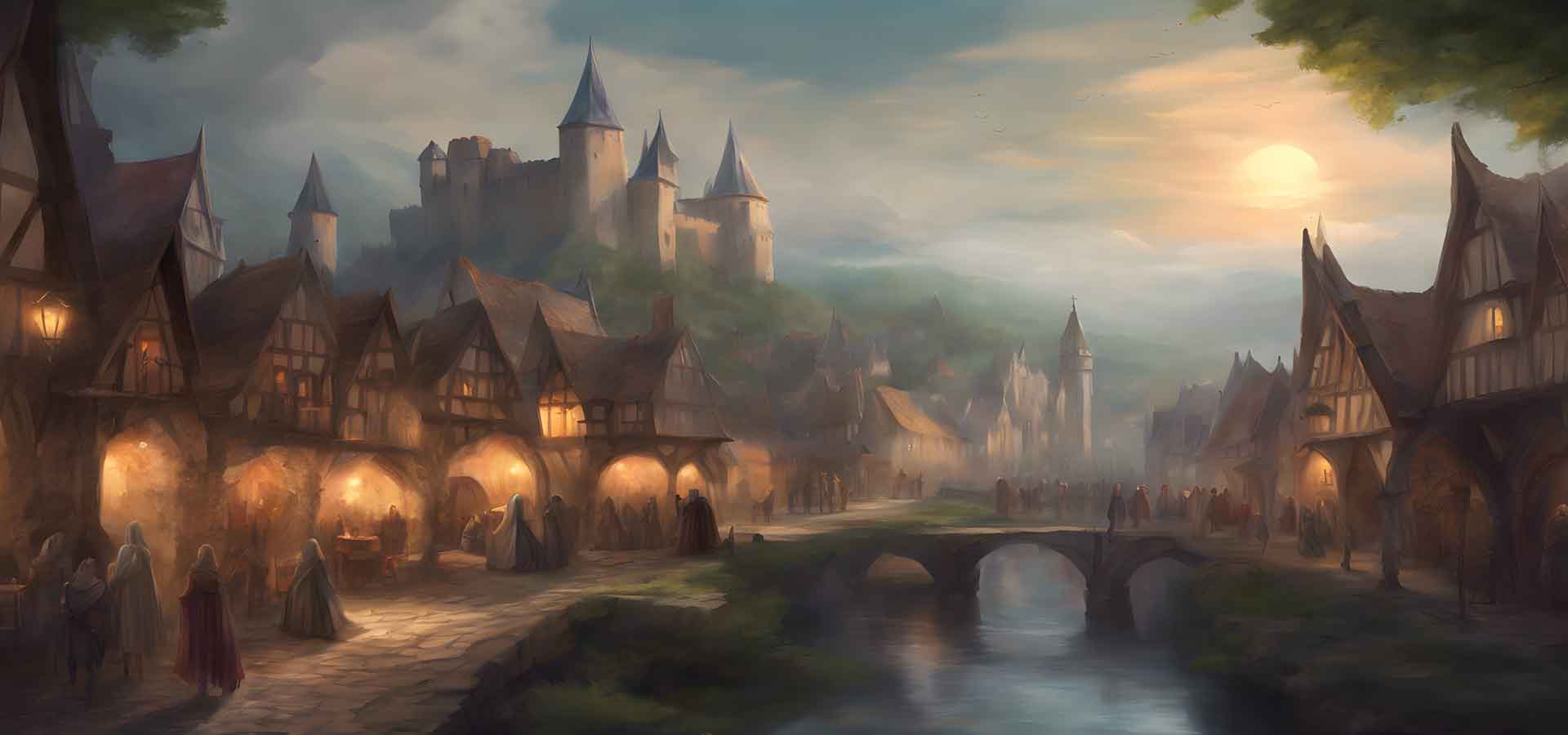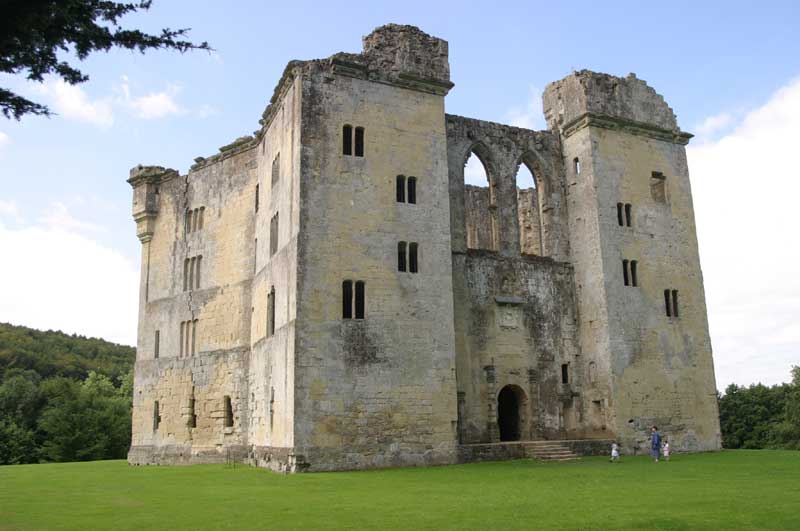Medieval Places starting with 'B' (original) (raw)
- Home
- Medieval Places
- Locations of lesser places
Please note that the TimeRef website is currently being redesigned.
Locations of lesser places
The locations listed on this page currently have less information so do not warrant a page of their own. As this website evolves and more information is added these locations will be promoted to individual pages.

Location Map (click to explore)
Timeline
License to crenelate (fortify) the castle at Bampton in Devon was granted.
The construction of this important church, located a few miles to the north of Paris where many of the French kings are buried, was begun in around 1140 by Abbot Suger, a counsellor of King Louis VI of France. The chosen site was that of an earlier monastery itself built on the site of a Roman tomb. In the middle of the 7th century King Dagobert I built the first church here.
| County | TBC | Categories | TBC |
|---|---|---|---|
| Remains | TBC | Access | TBC - Please check before visiting |
| County |
|---|
| TBC |
| Categories |
| TBC |
| Remains |
| TBC |
| Access |
| TBC - Please check before visiting |
See Also
- Beaulieu Abbey
- Christchurch Castle
- Hurst Castle
- Netley Abbey
- Odiham Castle
- Portchester Castle
- Romsey Abbey
- Southsea Castle
- Winchester Castle
- Winchester Cathedral
- A .. Z List of Medieval Buildings
Timeline
King Henry II rebuilt a castle at Basingwerk on the north coast of Wales overlooking a holy well. The king spent time at the castle while visiting the well. ¹
Timeline
The first of two castles located in London taking the name Baynard's Castle was built shortly after the Norman Conquest by Ralph Baynard, a Norman who was granted large amounts of land by William the Conqueror. The castle was demolished by King John in 1213.
 lso known as Old Beaupre or Bewpyr. More of a fortifier manor house than a castle. Owned by the Basset family from its construction in the 13th Century until the early 18th century. Notable for its inner porch. Located in South Wales a few miles to the west of Cardiff.
lso known as Old Beaupre or Bewpyr. More of a fortifier manor house than a castle. Owned by the Basset family from its construction in the 13th Century until the early 18th century. Notable for its inner porch. Located in South Wales a few miles to the west of Cardiff.
 elvoir Castle was originally a Norman castle but over time this has been replaced by what is now a stately house. It is open to the public as certain times.
elvoir Castle was originally a Norman castle but over time this has been replaced by what is now a stately house. It is open to the public as certain times.
Location Map (click to explore)
Location Map (click to explore)
See Also
Location Map (click to explore)
Bishop's Stortford Castle
 his motte and bailey castle was constructed by Roger de Conyers. It is located to the east of Bishopton Beck, a stream that may have provided water to fill the ditches around the castle. It appears that the defences were never replaced in stone. The motte is most likely to be a Norman construction rather than something earlier and the castle had two baileys, one to the north-west and the other to the south-east.
his motte and bailey castle was constructed by Roger de Conyers. It is located to the east of Bishopton Beck, a stream that may have provided water to fill the ditches around the castle. It appears that the defences were never replaced in stone. The motte is most likely to be a Norman construction rather than something earlier and the castle had two baileys, one to the north-west and the other to the south-east.
See Also
- Abinger Castle
- Farnham Castle
- Hampton Court Palace
- Reigate Castle
- Waverley Abbey
- A .. Z List of Medieval Buildings
Originally constructed as a motte and bailey castle by William Peveril, a supporter of William the Conqueror, but not mentioned in the Domesday Book so must have been constructed after that time. When King Henry II came to the throne the castle was forfeit to the Crown due to its owner murdering Ranulph the Earl of Chester. In 1189 Bolsvover was granted to Richard the Lionheart,but by 1215 the castle had become the possession of the Barons who then oppossed King John's reign. During the war with the Barons, the castle was regained for King John by William Ferrers, the Earl of Derby. Over the next few centuries the castle remained and important location but finally fell into decay. After the English Civil war the castle could have disappeared with its stone taken to be used elsewhere but it was bought by Sir Charles Canvendish who demolished the old castle and build a grand house and gardens that can still be seen today.
Timeline
The owner of Bolsover Castle, having murdered the Earl of Chester, forfeited his land to Henry II.
Location Map (click to explore)
Timeline
King John suspected that the loyalty of some barons towards the Crown was not strong so demanded they provide hostages to ensure they did not rise up against him. William de Braose was one of these barons. When a messanger arrived at Bramber Castle from the King with demands to hand over his children William de Braose refused stating that he could not trust the King with their safety. Together with his family William fled to Ireland. ¹
See Also
- Abbey Dore
- Bredwardine Castle
- Ewyas Harold Castle
- Goodrich Castle
- Hereford Cathedral
- Kilpeck Castle
- Kilpeck Church
- Staunton on Arrow Motte
- Weobley Castle (Herefordshire)
- A .. Z List of Medieval Buildings
See Also
- Alvecote Priory
- Astley Castle
- Baginton Castle
- Beaudesert Castle
- Brinklow Castle
- Kenilworth Castle
- Maxstoke Castle
- Stoneleigh Abbey
- Warwick Castle
- A .. Z List of Medieval Buildings
See Also
- Abbey Dore
- Brampton Bryan Castle
- Ewyas Harold Castle
- Goodrich Castle
- Hereford Cathedral
- Kilpeck Castle
- Kilpeck Church
- Staunton on Arrow Motte
- Weobley Castle (Herefordshire)
- A .. Z List of Medieval Buildings
Location Map (click to explore)
 inor remains of a motte and bailey castle. No information and possibly on private land.
inor remains of a motte and bailey castle. No information and possibly on private land.
Selection of references used:
- 1. Derek Renn, Norman Castles, 1968
- 2. John Guy, Castles in Sussex, 1984, ISBN:ISBN-0-85033-523-X
A Medieval Mystery
There appear to be some strange connections between the fourteenth century Old Wardour Castle and ancient stone circle Stonehenge.
1: Location
Old Wardour Castle appears to be aligned to ancient sites in the Stonehenge landscape.
2: Alignment
Stonehenge is aligned to the Summer Solstice. Old Wardour has a very similar alignment.
3: Size
Could the builders of Old Wardour used mesaurements from Stonehenge to layout the geometrical keep?
Learn More





